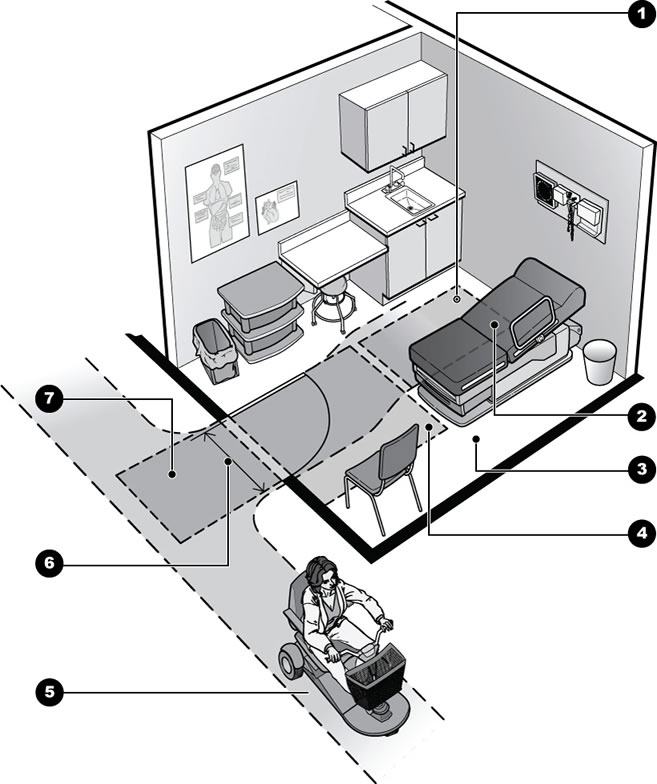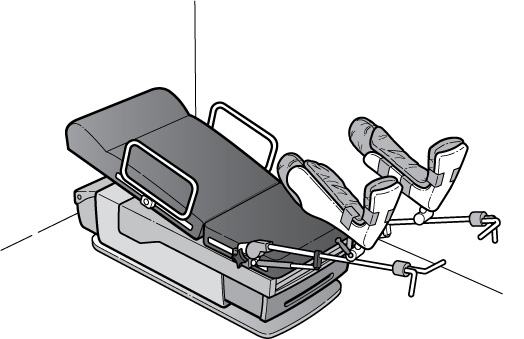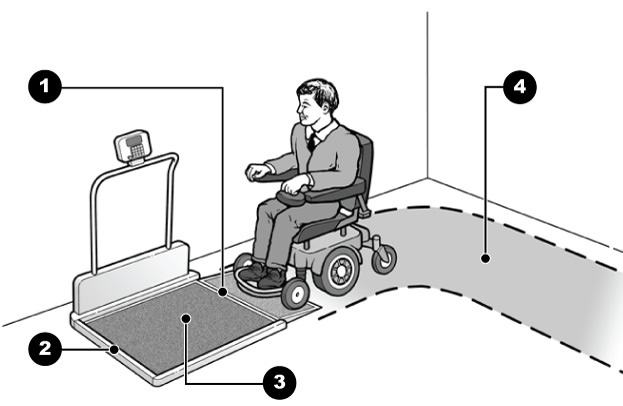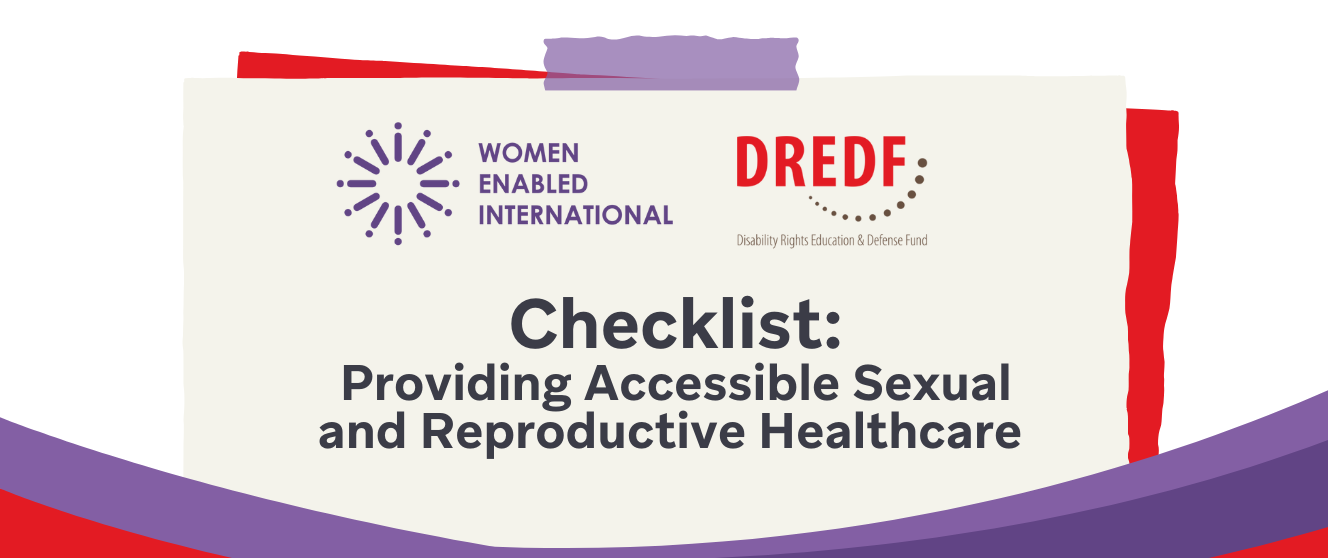This resource was developed by Disability Rights Education and Defense Fund (DREDF) and Women Enabled International (WEI) as a tool for providers and clinic staff to evaluate the accessibility of their practices for people with disabilities. Our full report, “Lessons from the Disability and Abortion Access Survey: Responses and Recommendations,” provides further detailed recommendations.
Print the Checklist
You can download and print out the PDF version of this checklist.
Accessible Technology: Information Access, Websites, & Telehealth
- Ensure website, online intake forms, and telehealth platform comply with the Web Content Accessibility Guidelines 2.2 (WCAG 2.2).
- Ensure websites and relevant resources are written in plain language (ideally 5th grade reading level or lower).
- The Hemingway Editor App can be used for plain language writing.
- Include information on website that is relevant to people with disabilities, such as how to request communication services and accommodations, rights to access services, and the accessibility of physical spaces or medical equipment.
- Ensure telehealth platform can support:
- Live, integrated professional captioning (Communication Access Realtime Translation or “CART”);
- Automatically generated captions; and
- The integration of additional people from additional locations, such as an ASL interpreter or a patient’s supporter.
- HHS Guidance on accessible telehealth and more information on relevant regulations
Reasonable Accommodations
- Ask patients at the first point of contact if they have any access needs or need any accommodations to make services accessible to them.
- Try: “Do you have any access or communication needs that we should know about? Is there anything we can do that would make our services more accessible to you?”
- Note patients’ access needs and disabilities (if disclosed) in their electronic records so their documented needs follow them throughout their care experience.
- Have a formalized procedure in place for providing accommodations in a timely fashion.
- Train staff and providers in the clinic’s legal responsibilities to provide accommodations, how to provide them in practice, and how to support disabled patients during an appointment.
Common Accommodations (non-exhaustive list)
- Budgeting additional time for an appointment
- Allows for physical transferring, engaging with interpreters, checking understanding, taking breaks, etc.
- Allowing a support person to be present at an appointment
- Using supported decision-making
- Performing a pelvic exam in an alternative position or providing additional modifications and supports during a pelvic exam
- Moving items that block the path of travel for people who use mobility aids like wheelchairs, walkers or canes
- Reserving an appointment room that has accessible equipment
- Turning down the brightness of the exam room lights
- Providing a written outline of the information discussed during the appointment
- Wearing a mask
- The possibilities are endless!
Effective Communication
- Ask patients at the first point of contact if they have any communication access needs and what forms of communication are most accessible to them.
- Note patient’s communication needs in their electronic records.
- Have forms available in multiple formats, including plain language, larger text, and braille. When possible, share forms in advance in an electronic format so patients may review them ahead of their appointment.
- Have interpretation (including ASL) and captioning contracts in place prior to receiving effective communication requests.
- Have a formalized process for providing auxiliary aids and services in a timely fashion, including but not limited to:
- ASL Interpreters (in-person or through Video Remote Interpreting, “VRI”); some patients may need an interpreting team including a Deaf interpreter
- Pocket talkers
- Written materials in multiple accessible formats including plain language, Braille, and large print
- Live captioning services
- Assistive listening devices
- Train staff and providers in the clinic’s legal responsibilities to facilitate effective communication and how to do so in practice.
Physical Accessibility
Accessible Facilities
- Facilities have features that make it possible for patients with mobility disabilities, including wheelchair users, to receive medical care. These features allow the patient to:
- Enter the building and exam room
- Move around freely in the building and exam room
- Use the accessible equipment provided
- To achieve this, facilities must comply with the appropriate regulations and standards for accessible design depending on the build and last renovated date.
Accessible Exam Rooms
- A clear floor space, 30” X 48” minimum, adjacent to the exam table & accessible route to allow for transfer.
- Adjustable height accessible exam table lowers for transferring.
- Space between table and wall allows staff to assist with patient transfers & positioning.
- Amount of floor space needed beside and at end of exam table will vary depending on method of patient transfer.
- Accessible route connects to other accessible common use spaces.
- Accessible entry door has 32” minimum clear opening width with door open to 90 degrees.
- Door to the room must allow for maneuvering clearances.
Medical Care Access for Patients with Mobility Disabilities (DOJ)
Accessible Medical Equipment
- Facility has accessible medical equipment, including:
- Accessible exam table: adjustable height, adjustable grab bars, leg and foot supports instead of simple stirrups
- Accessible weight scale: enables a wheelchair user to be weighed in their wheelchair
- If applicable, accessible mammography, x-ray equipment
- All newly purchased or leased medical equipment acquired by a medical facility that receives federal funding must be accessible until the facility reaches a certain percentage of accessible equipment.
- According to federal regulations, by July 8, 2026, every medical facility that receives federal funds must have at least one accessible exam table and one accessible scale.
- Staff and providers are trained on how to safely use accessible medical equipment, and move things in the path of travel for wheelchair users.

Accessible gynecological exam table

Accessible weight scale
For more information on disability informed provision of clinical care, check out the Clinician’s Guide to Disability-Informed Care by the National Coalition for Sexual Health.
